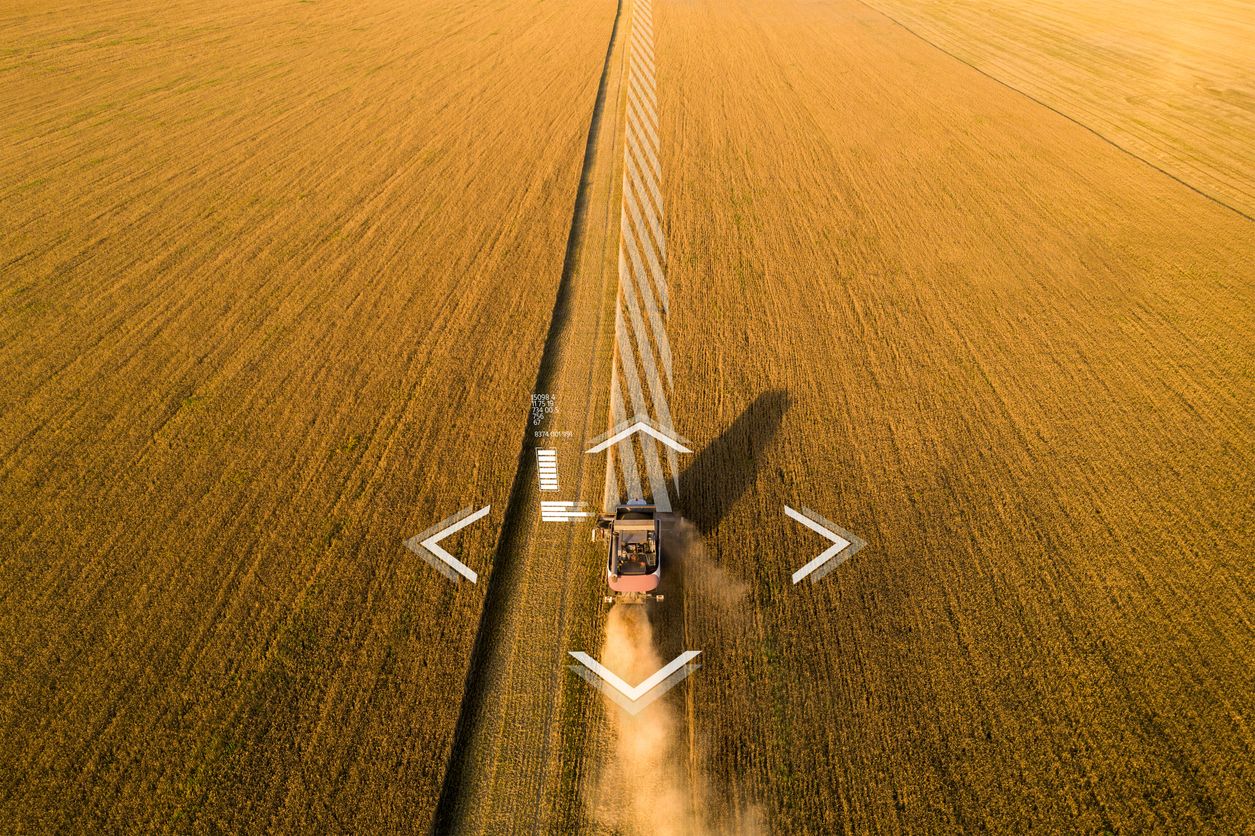Editor’s Note: Marco Brini is a digital agriculture expert, affiliated with renowned institutions such as ETH, ITU, and FAO. Currently a Digital Agriculture Expert at ETH – World Food System Center, he has also worked as a freelance consultant, CTO, and CEO-founder for various organizations, focusing on digital agriculture solutions, IoT technologies, and outdoor monitoring systems. Marco holds multiple patents in the field. He recently wrote a free digital book entitled ‘Implementing Digital Agriculture Step-by-Step,’ which he summarizes here.
Why I wrote this book?
I believe that while the world is facing the challenges of sustainable food production intensification, new technologies offer a tremendous opportunity to address these issues. Technologies themselves are not enough, however; the key lies in how they are adopted and used. Defining the right mix and adoption time for each technology is crucial for maximizing their potential and ensuring sustainable food production.
This is the first book intending to introduce a methodology to rationalize the adoption of digital agriculture technologies, helping farmers and agronomists make informed decisions about which, how, and when the digital tools should be adopted, having in mind increased productivity, better resource management, and more sustainable food production. By focusing on the implementation phases and farm-specific factors, the SmartAg Optimize methodology ensures that technologies are tailored to a farm’s unique needs, unlocking their true potential. I wrote this book as a personal investment and motivation and not for my work with the World Food System Center.
What is digital agriculture and how much is it being adopted?
This is how I segment digital agriculture.
- ERP (Farm Management Systems): the adoption of farm management systems has been growing steadily over the years, with a compound annual growth rate (CAGR) of around 7.6% from 2016 to 2022. In 2022, the global farm management software market was valued at approximately $1.8 billion, and it’s projected to reach around $4.3 billion by 2027.
- Data Collection: technologies for data collection in agriculture, such as remote sensing, drones, and IoT devices, have also seen increasing adoption. The global market for precision agriculture was valued at around $5.9 billion in 2022 and is expected to reach $13 billion by 2027, with a CAGR of 13.1% from 2023 to 2027. Data collection technologies are a significant component of the precision agriculture market.
- Decision Support (DS): Decision support systems, including yield maps, soil maps, and other data-driven tools, have been gaining traction as more farmers recognize their potential to improve decision-making and optimize resource use. The market for agriculture analytics, which includes decision support systems, was valued at around $1.1 billion in 2022 and is projected to reach $1.7 billion by 2025, growing at a CAGR of 14.5% during the forecast period.
- Data-Driven Equipment and Input Adjustment: The adoption of data-driven equipment, such as guidance systems, automatic section control, and variable rate applications, has been on the rise as well. The global market for precision farming technologies, which encompasses data-driven equipment and input adjustment, was valued at around $4.7 billion in 2022 and is expected to reach $10.4 billion by 2025, with a CAGR of 12.3% from 2022 to 2025.
A comprehensive guide
“Implementing Digital Agriculture Step-by-Step” is a comprehensive guide that explores the world of digital agriculture and its applications for modern farming. The book provides a general overview of the digital agriculture landscape and then delves into more specific aspects through its chapters.
In the “COMPONENTS OF DIGITAL AGRICULTURE” chapter, the book aims to clarify the agtech landscape by offering a thorough understanding of the key components, including data collection, decision support systems, and data-driven equipment and input adjustment. Within each component, the book explores various subcategories, providing detailed explanations and examples.
The “DIGITAL AGRICULTURE: IMPLEMENTATION PATHS” chapter emphasizes the importance of a step-by-step implementation process for adopting digital agriculture technologies. It offers practical guidance for developing tailored implementation paths based on specific goals, such as increasing yields, reducing input costs, or improving sustainability. This chapter also provides real-world examples to help readers better understand the process and its applications.
The “SmartAg OPTIMIZE METHODOLOGY” chapter introduces a methodology designed to guide farmers in successfully implementing each new technology. This step-by-step process helps ensure that farmers and agronomists can efficiently and effectively implement digital agriculture technologies on their farms, taking into account their unique needs and farm-specific factors.
By providing a thorough understanding of the digital agriculture landscape and practical guidance on implementing digital agriculture technologies, the e-book aims to empower farmers, agronomists, and other stakeholders to harness the potential of digital agriculture for increased productivity, better resource management, and more sustainable food production.
Who is it for?
“Implementing Digital Agriculture Step-by-Step” is designed for a wide range of readers who are interested in the practical aspects of digital agriculture and its potential to transform farming practices. The book offers valuable insights and benefits for various categories of readers:
- Farmers: By reading this book, farmers will gain a deeper understanding of digital agriculture technologies and how they can be adapted to their specific needs. They will learn how to select the right tools and develop tailored implementation paths to optimize their farming operations, improve productivity, and increase sustainability. The book’s practical examples and step-by-step guidance will enable farmers to make more informed decisions about adopting and implementing digital agriculture technologies on their farms.
- Agronomists: Agronomists will find this book helpful in advising their clients on the adoption and implementation of digital agriculture technologies. The book provides a comprehensive overview of the digital agriculture landscape, as well as practical guidance for developing implementation paths and optimizing the use of these technologies. Agronomists can use this knowledge to better support farmers in making informed decisions and maximizing the potential of digital agriculture.
- Researchers: Researchers in the field of digital agriculture will benefit from the book’s thorough examination of the AgTech landscape and its various components. The book provides an up-to-date resource for understanding the current state of digital agriculture, as well as a practical guide to implementing these technologies. Researchers can use this information to inform their own work and contribute to the ongoing development and advancement of digital agriculture.
- Students: Students studying agriculture or related fields will find this book an invaluable resource for understanding the practical aspects of digital agriculture and its potential to revolutionize farming practices. The book’s clear explanations, real-world examples, and step-by-step guidance will help students gain a solid grasp of the subject matter and better prepare them for their future careers in the industry.
- Other interested readers: Anyone interested in learning how digital agriculture can improve farm management, boost productivity, and promote sustainability will benefit from reading this book. It provides a comprehensive and accessible overview of the digital agriculture landscape and offers practical guidance for implementing digital agriculture technologies, making it a valuable resource for anyone keen to explore the potential of digital agriculture.
Download the book for free here.




